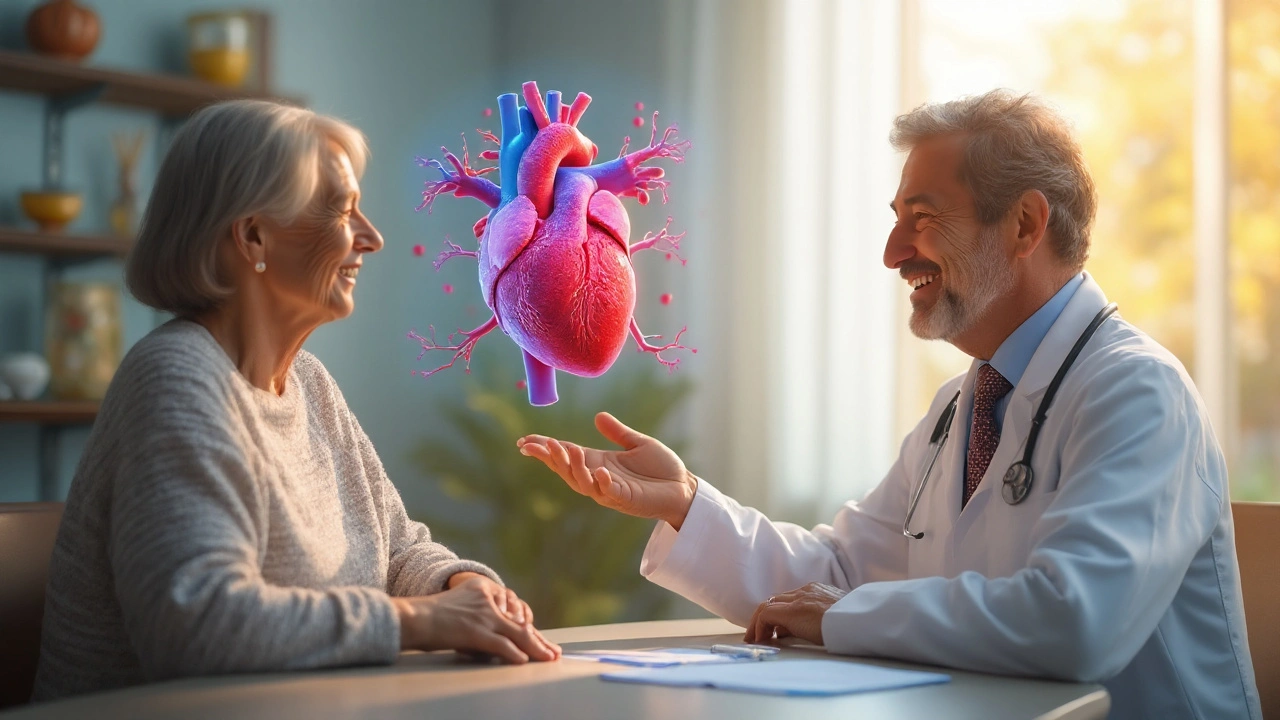Blood Clot: Quick Guide to Causes, Risks, and What to Do
Blood clots can feel scary, but understanding them makes them less mysterious. A clot is just a lump of blood that has hardened to stop bleeding. Sometimes it stays where it belongs, like after a cut. Other times it forms inside a vein or artery and blocks blood flow. When that happens, you can feel pain, swelling, or even danger to vital organs. Knowing the basics helps you catch problems early and act fast.
How Blood Clots Form
Your blood is always ready to clot when you get hurt. Platelets and proteins rush to the site, stick together, and turn liquid blood into a solid plug. This is great for stopping bleeding, but if the clot forms without an injury, it can block circulation. Factors like a sedentary lifestyle, surgery, or certain medicines can tip the balance toward clotting. Even a family history of clotting disorders raises the odds.
Signs and When to Seek Help
Clots in the legs often cause a painful, swollen calf or thigh – that’s deep‑vein thrombosis (DVT). Look for warmth, redness, or a feeling of heaviness. If a clot travels to the lungs, you might get sudden shortness of breath, chest pain that worsens when you breathe, or a fast heartbeat. These are emergency signals. Don’t wait; call a doctor right away if you notice any of these symptoms.
Clots can also affect the brain, causing a stroke. Sudden trouble speaking, facial drooping, or weakness on one side of the body are red flags. Quick medical attention can save brain tissue and improve recovery chances.
Ways to Lower Your Risk
Staying active is one of the easiest defenses. A short walk every hour keeps blood moving, especially on long flights or after surgery. Keep your weight in a healthy range, as extra body fat can increase clotting pressure. If you smoke, quitting reduces damage to blood vessels and improves circulation.
Talk to your doctor about any medications that might raise clot risk, like hormone therapy or certain cancer drugs. In some high‑risk cases, doctors prescribe blood‑thinning pills or compression stockings to keep veins open.
What to Do If You Suspect a Clot
First, don’t massage the area – that could dislodge the clot and cause it to travel. Elevate the leg slightly and avoid tight clothing. Get to a medical facility fast; doctors may use an ultrasound to spot a clot in the leg or a CT scan for the lungs.
Treatment often involves anticoagulants, sometimes called “blood thinners.” These medicines don’t dissolve the clot right away but stop new ones from forming, giving your body time to break down the existing clot safely. In serious cases, a clot‑busting drug or a small procedure may be needed.
After treatment, follow up regularly. Keep track of any side effects from blood thinners, like unusual bruising or bleeding. Maintaining a healthy lifestyle and staying aware of warning signs reduces the chance of another clot down the road.
Blood clots are common, but with the right knowledge you can prevent them and act quickly if they appear. Stay active, watch for symptoms, and keep your doctor in the loop. Your blood works best when you give it the support it needs.
Atenolol and Blood Clots: Essential Facts & Risks
- Benjamin Aghaki-Allen
- Health
- 17 comment
Learn how Atenolol interacts with blood clot formation, the science behind the risk, clinical evidence, and practical steps to stay safe while using this beta‑blocker.
VIEW MORECategories
Popular posts
-
How to Check Medication Names, Strengths, and Dosage Forms Safely
Benjamin Aghaki-Allen -
Astelin vs Other Nasal Allergy Sprays: Azelastine Comparison Guide
Benjamin Aghaki-Allen -
Metronidazole Neuropathy: Recognizing Numbness and Tingling Early to Prevent Permanent Damage
Benjamin Aghaki-Allen -
GERD and Acid Reflux: How PPIs and Lifestyle Changes Work Together
Benjamin Aghaki-Allen -
What Are Drug Side Effects: Definition, Causes, and Real-World Examples
Benjamin Aghaki-Allen
Popular tags
- side effects
- online pharmacy
- medication safety
- dietary supplement
- gut health
- blood pressure medication
- alternatives
- generic drugs
- dosage
- weight management
- quality of life
- cheap generic Zoloft
- affordable sertraline
- ED medication comparison
- Tadalafil
- comparison
- medication adherence
- therapeutic equivalence
- Hatch-Waxman Act
- generic vs brand
